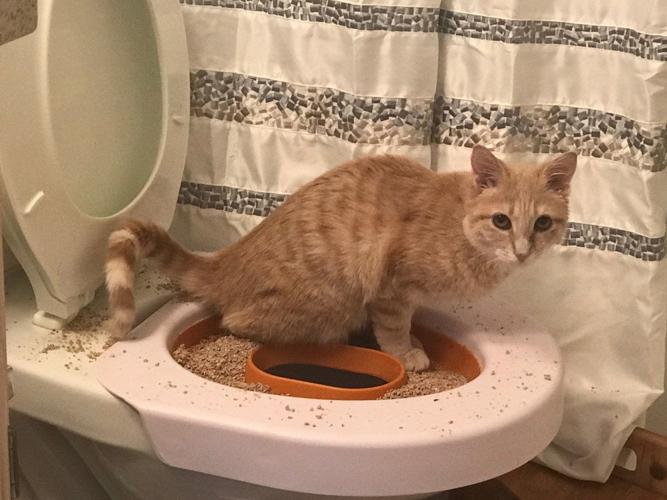Exploring Why Animal Waste Has to Not Be Flushed Down the Toilet
Exploring Why Animal Waste Has to Not Be Flushed Down the Toilet
Blog Article
What are your insights and beliefs about 10 Things You Should Never Flush Down The Toilet?

When it involves throwing away waste, specifically animal waste, many people commonly turn to the practical choice of flushing it down the toilet. Nonetheless, this apparently simple remedy can have serious consequences for the atmosphere and public health. In this article, we'll check out why flushing pet waste down the bathroom is a negative idea and provide different techniques for appropriate disposal.
Intro
Proper waste disposal is vital for keeping ecological sustainability and public health. While it might seem harmless to flush animal waste down the commode, it can result in numerous issues, both for the environment and human wellness.
Dangers of flushing animal waste
Environmental impact
Flushing pet waste presents hazardous bacteria and microorganisms into rivers, which can adversely affect aquatic environments. These microorganisms can contaminate water resources and injury aquatic life, interrupting fragile communities.
Public health worries
Pet waste consists of dangerous germs such as E. coli and Salmonella, which can pose significant health and wellness risks to people. Purging pet waste down the commode can contaminate water materials, leading to the spread of diseases and infections.
Alternatives to flushing
Rather than flushing animal waste down the toilet, there are a number of alternate disposal techniques that are extra environmentally friendly and hygienic.
Composting
Composting pet waste is an environment-friendly means to deal with it. By composting, organic matter is broken down right into nutrient-rich soil, which can be used to feed gardens and plants.
Landfill disposal
Throwing away animal waste in a land fill is one more alternative. While not as eco-friendly as composting, it is a safer option to flushing, as it avoids the contamination of water resources.
Pet waste disposal systems
There are customized animal garbage disposal systems offered that securely and hygienically get rid of animal waste. These systems typically utilize enzymes to break down waste and remove smells.
Steps to proper animal garbage disposal
To guarantee appropriate disposal of animal waste, adhere to these actions:
Scooping and landing waste
On a regular basis scoop and bag animal waste making use of naturally degradable bags. This protects against waste from contaminating the atmosphere.
Utilizing assigned waste bins
Dispose of bagged pet waste in marked waste bins, such as garden compost bins or land fill bins. Avoid flushing it down the bathroom whatsoever prices.
Cleaning up can and pet locations regularly
Regularly tidy can and animal areas to prevent the accumulation of waste and microorganisms. Usage pet-safe cleansing products to maintain health.
Advantages of correct disposal approaches
Embracing appropriate disposal techniques for animal waste offers several advantages:
Lowered environmental pollution
Correct disposal techniques decrease the risk of environmental pollution, protecting rivers and ecological communities from contamination
Decreased danger of water contamination.
By avoiding flushing pet waste down the toilet, the danger of water contamination is significantly reduced, guarding public health.
Enhanced hygiene and health
Proper disposal techniques advertise much better sanitation and hygiene, creating a much safer setting for both people and animals.
Final thought
Finally, purging animal waste down the toilet is dangerous to the environment and public health. By adopting alternate disposal methods and following correct waste monitoring methods, we can lessen the negative influence of animal waste and add to a cleaner, healthier earth.
What To Do With Dog Poo – The Do's And Don'ts Of Disposing Of Faeces
Dog poo bins
Some councils provide dedicated dog waste bins in popular dog-walking areas that can take dog poo that has been bagged but you can legally dispose of dog waste in any public litter bin, as long as it is securely bagged. This also applies to your wheelie bin at home.
Do not flush
Water companies do not recommend flushing dog faeces down the toilet because certain parasites can survive the water processing treatment and are potentially harmful to humans. You should also never consider flushing dog poo that has been bagged down the toilet as the bags will not break down and instead create severe blockages in the sewage system.
In the woods
The Forestry Commission promotes a ‘stick and flick’ method for dealing with waste in the woods. This means finding a stick and using it to flick any poo from off the path so that it is out of the way of other walkers. You could also bury it as long as it is not in an area where there might be livestock.
Livestock
Parasites found in dog poo can be transmitted to livestock if they inadvertently eat infected faeces that has been left on grazing land. This could result in the death of sheep or abortion in cattle so you should always make sure you pick up your dog’s waste in fields where livestock could be present.

I recently found that review about 4 Reasons Why Dog Poop Cleanup is Important while doing research the internet. Sharing is good. Helping people is fun. Thanks for taking the time to read it.
Book Report this page